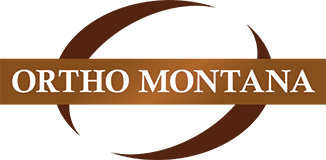In the past couple of decades, society has done an about face in our thinking about exercise activities for seniors. We used to relegate the grandparents to a rocking chair assuming that older adults were somehow weak and frail and it was too dangerous for them to try to be active. Similarly, it was felt to be diminished function and independence was an unavoidable and natural response to aging in most people after age 60 or so.
More recent studies have consistently shown that older adults can remain active into their 70s and 80s and even beyond. In fact, scientific studies have shown that exercise promotes health and quality of life and independence for seniors. Regular physical activity can prevent and combat chronic illnesses, fight depression and improve many other aspects of life in later adults.
An article in the August of 2004 Journal of American Medical Association addressed exercise programs in the elderly following surgical treatment for a hip fracture. It was shown that a six month supervised intense exercise program with resistance training was better than a low intensity home exercise program and did improve physical function, quality of life and reduce disability.
Key elements of a regular activity/exercise program include four main areas:
- Endurance. In general to get the health benefits, this should include activities of over 10 minutes involving large muscle groups. This would include walking, swimming, riding a bike, etc
- Strength. This includes light resistance exercises (such as weight lifting) usually two or three times a week. This has been shown to decrease arthritis and pain and improve general function including walking, stair climbing, sitting to standing and other activities of daily living.
- Flexibility. This also improves general function and ability to perform activities of daily living including pulling on socks and shoes, etc.
- Balance. The three preceding components all contribute, but one can work on balance independently as well. This helps prevent falls, one of the major causes of injury and disability for older adults.
There are several issues, such as barriers to activity and getting starting, progression of the activity, safety and encouraging consistency and adherence to an activity program. Generally, we start with low intensity activities and build. It is good to use some exercise professionals particularly early on to improve safety and to allow monitoring and progression and feedback. Surprisingly, safety turns out to be a small issue particularly starting with the low impact activities. Experts feel that the benefits for the individuals and society as a whole far outweigh the risks of acute musculoskeletal injuries for major problems. It helps to be involved in organized activities in a group or a “buddy system” to set goals and have some monitoring and encouragement from professionals.
The data is ill-refutable. If anything, we need to make a bigger, more consistent effort to exercise as we age when the usual blessings of independence and easy good health that come with youth start to wane. So, get up and move and improve your health and your life. For more information, contact the National Institute on Aging, 1-800-222-2225, or logon http://nihseniorhealth.gov and click “Exercise for Older Adults”. Also, the Community Center and local health clubs provide programs such as “Silver Sneakers” for older adults.
